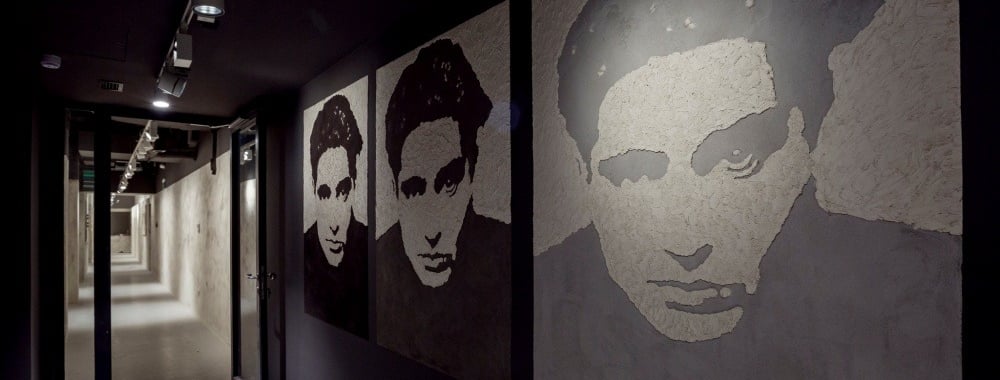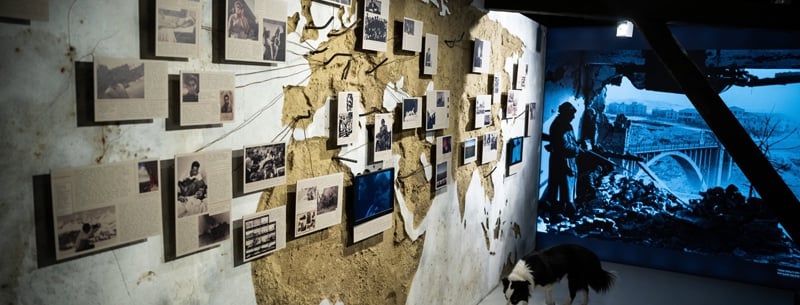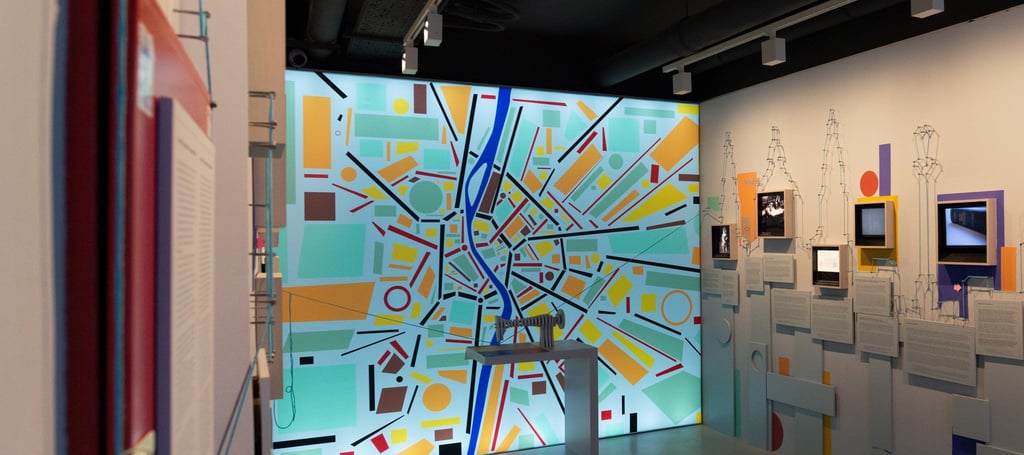Robert Capa Contemporary Photography Center: Where the Lens Meets Legacy
Step into a sanctuary where images speak louder than words, and every photograph tells a story of courage, humanity, and the art of seeing.


In the Heart of Budapest, a Legacy Unfolds
There is a corner of Budapest where time slows down. Not because the street is empty or quiet, but because the walls themselves remember. On Nagymező utca, beneath the hum of neon and the fading posters of cabarets, lies a building that seems to hold its breath. Inside, the Robert Capa Contemporary Photography Center waits—not like a museum, not like a gallery, but like a revelation.
Here, the spirit of a man who ran toward gunfire with nothing but a camera lives on. Robert Capa, born Endre Ernő Friedmann, was not just a photographer. He was a human seismograph. He recorded tremors not of the earth, but of the soul—across trenches, deserts, revolutions, and loves. And in this space, named for him, photography is not decoration. It is confrontation. It is testimony.
A Name That Changed Everything
Capa’s story is as blurred and sharp as the images he took. A Jewish boy from Budapest who fled rising fascism, he crafted a fictional persona—“Robert Capa, American war photographer”—to penetrate markets that wouldn’t trust a Hungarian refugee. The name stuck. The persona became real. And under it, he gave us some of the 20th century’s most unforgettable images: the dying soldier in Spain, the Normandy landings, the liberation of Paris.
But Capa was never just chasing war. He chased truth. And the Robert Capa Contemporary Photography Center, opened in 2013, honors this relentless, romantic, and complicated pursuit. It is not a shrine. It is a lens still turning, focused on our modern world through the framework of one man’s vision.
The Building: Where Past and Present Collide
The center is housed in the former Ernst Museum, a site of art and avant-garde spirit since the early 20th century. It has been reimagined, yes—but not erased. The high ceilings, the long sightlines, the creaking floorboards—all remain. And yet, as you enter, you are ushered into something undeniably now.
The interior is minimalist, white-walled and whisper-quiet, punctuated only by the pulse of the photographs. Natural light pours in, but never harshly. It guides you. Illuminates without blinding. The rooms fold into one another like chapters in a novel—each exhibition a new tone, a new truth, a new tension.
This is not a place to rush through. It is a space for lingering. For listening.
The Permanent Capa Presence
Though the Center does not hold a permanent, full-scale Capa exhibition, his presence permeates every pixel and wall. Selections from his most iconic series rotate through its rooms, carefully curated to reflect both his breadth and his soul.
From the horror of D-Day’s blur and blood,
To the quiet devastation of Spanish villagers under Franco,
To the hauntingly intimate portraits of Chinese peasants during the Sino-Japanese War,
And the tender moments with Ingrid Bergman, whom he loved and lost
His photographs are displayed not as relics, but as mirrors. Each frame is a fragment of a heartbeat. You feel the wind, the dirt, the distant shell fire. You do not see war—you stand inside it.
Accompanying the images are essays, timelines, excerpts from Capa’s writings, and audio clips that weave the history with the art. They don’t glorify war. They humanize those caught in it.
The Rotating Exhibitions: Photography as Pulse
While Capa is the spirit, the soul of the Center is its rotating exhibitions. These are not limited to the documentary or war photography that Capa pioneered. Instead, they explore the full spectrum of contemporary photographic practice—from conceptual art to environmental storytelling, from staged portraiture to candid journalism.
Past exhibitions have included:
Sociopolitical photo essays from war-torn Syria and Ukraine
Explorations of gender, migration, and surveillance
Photographic responses to climate change and urban decay
Experimental works where the photograph becomes sculpture, sound, or code
Each exhibition is carefully designed. The photos are not hung arbitrarily—they are choreographed. They tell stories. They echo each other. They confront the viewer not with shock, but with clarity.
Sometimes you are overwhelmed. Sometimes you are comforted. Often, you are left disturbed—in the best way. Photography, here, does not soothe. It insists.
The Magnum Legacy and Global Connections
Robert Capa was not just a lone wolf. He co-founded Magnum Photos, the world’s most prestigious photo agency, alongside legends like Henri Cartier-Bresson. The Center honors this legacy with regular exhibitions of Magnum photographers, many of whom are shaping today’s visual narrative across continents and conflicts.
Magnum archives, masterclasses, and retrospectives are a staple of the Center’s programming. In one room, you may see black-and-white images from 1950s Harlem. In another, vibrant shots of Afghan marketplaces from just a few years ago. This global reach is not incidental—it is essential. Capa’s legacy was transnational. The Center continues that mission.
Education and the Art of Seeing
Beyond exhibitions, the Capa Center is a living school—one dedicated not to photography alone, but to the act of seeing.
Its workshops and masterclasses welcome photographers from all levels. Some are technical—about lighting, lenses, or post-processing. Others are conceptual—about ethics, storytelling, and the quiet power of composition.
Regular programs include:
Portfolio reviews with curators and editors
Panel discussions with award-winning journalists and artists
Lectures on visual anthropology, ethics, and digital manipulation
Hands-on programs for high school and university students
Collaborations with media festivals and international universities
The tone is never dry or academic. The emphasis is on the photograph as a human act—a bridge between realities, between the seen and the unseen.


Community, Culture, and Contemporary Vision
The Robert Capa Contemporary Photography Center is more than an exhibition space—it is a cultural engine. It pulses with events, festivals, and collaborations that place it at the heart of Hungary’s visual arts scene. From the moment it opened its doors in 2013, the center positioned itself as a hub not just for artists, but for viewers, thinkers, activists, and everyday people.
Each year, the Center plays host to the Budapest Photo Festival, as well as smaller programs such as Capa Nights, where photographers present their work in informal conversations over drinks and music. These events often spill out onto the street in summer, transforming Nagymező into an impromptu studio, salon, and schoolyard for the city’s creators.
International artists from Brazil, Japan, Nigeria, Germany, Syria, and beyond have exhibited here, but the Center is also deeply committed to Hungarian photographers—emerging and established. It is a platform for national talent, a place where a young lens from Szeged might hang beside a Pulitzer winner. In this curation, there is democracy.
The Archive and the Invisible Work
Behind the scenes, the Center’s archive and research division plays an equally vital role. While the galleries dazzle, these rooms hum quietly with preservation. The team here collects:
Unpublished prints and negatives
Manuscripts and letters from photojournalists
Digital archives of Hungarian photo history
Documentation of exhibitions, protests, and ephemera
This invisible labor ensures that the history of photography is not lost, but catalogued, studied, and made available. Scholars, curators, journalists, and students are invited to dive in. Because to understand an image, you must understand its context. Its silence. Its secrets.
A Café and a Pause
Like all great cultural spaces, the Capa Center understands that contemplation needs rest. A cozy café and bookshop greet visitors near the entrance. Here, under exposed brick and soft lamps, you can leaf through rare photography books, sip coffee, and let the images settle.
The bookshop stocks monographs, zines, exhibition catalogs, and photographic theory. It’s a treasure trove for both collectors and curious minds. Many of the books are hard to find elsewhere in Hungary—and some are self-published works by the very artists on the walls.


Visiting Information
Practical Information
Location
Robert Capa Contemporary Photography Center
Nagymező utca 8, 1065 Budapest, Hungary
Located in Budapest’s bustling 6th District, just a few steps from Andrássy Avenue and the Hungarian State Opera. Easily accessible by Metro 1 (Opera station), trams, and buses.
Opening Hours
Tuesday to Sunday: 11:00 AM – 7:00 PM
Closed on Mondays
Last admission at 6:30 PM
Allow at least 90 minutes to explore the exhibitions at a relaxed pace. Check the calendar for special programs, guided tours, and artist talks.
Ticket Prices
Adults: 5,000 HUF (~$13.50)
Students (ages 6–26): 3,000 HUF (~$8.10)
Seniors (62+): 3,000 HUF
Children under 6: Free
Guided tour add-on: 2,000 HUF (~$5.40)
Discounted group tickets available. Entrance is occasionally free during citywide cultural events.
Accessibility
Wheelchair-accessible entrance and galleries
Audio-visual material with Hungarian and English subtitles
Printed material available in English and Hungarian
Some events offer sign language interpretation
For additional accessibility accommodations, visitors are encouraged to call ahead.
Official Website and Social Media
Website: https://capacenter.hu/en
Facebook: https://www.facebook.com/capacenter
Instagram: https://www.instagram.com/capacenter
YouTube: https://www.youtube.com/@capacenter








